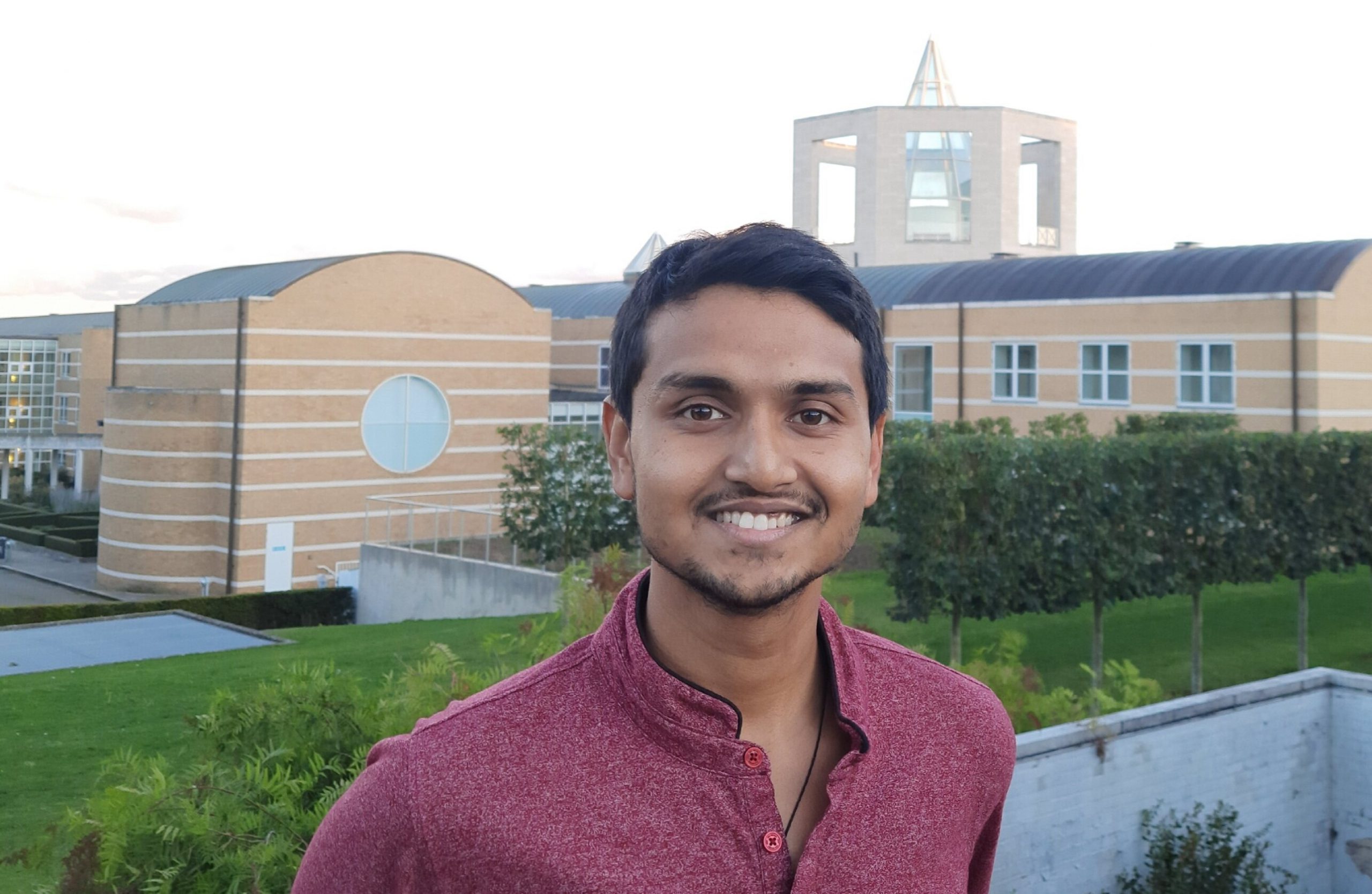
Arnab Sarkar talks about his road to doing a PhD in Astronomy at Cambridge and his research into white dwarfs.
We have observed supernovae explosions in space and astronomers say some are peculiarly luminous. Our hypothesis is that this can be explained by white dwarfs with a strong magnetic field and fast rotation.
Arnab Sarkar
Arnab Sarkar’s PhD research, which he starts this autumn, will review the Nobel prize-winning research of Subrahmanyan Chandrasekhar into white dwarfs – very dense and small ‘corpses’ of stars that are typically the volume of a planet like Earth while having a mass that is comparable to the Sun.
Chandrasekhar showed that the mass of a white dwarf could not exceed 1.44 times that of the Sun – something that became known as the Chandrasekhar limit.
Arnab [2021] says the limit has since been called into question because it ignored the fast rotation and strong magnetic fields associated with white dwarfs. “We now know that you cannot ignore these processes,” says Arnab. “The aim is to arrive at a better limit.”
He adds: “We have observed supernovae explosions in space and astronomers say some are peculiarly luminous. Our hypothesis is that this can be explained by white dwarfs with a strong magnetic field and fast rotation.”
Childhood
Arnab was born in Jamshedpur, a city near Kolkata, but his parents moved to the small suburb of Jamnagar when he was six months old. The area is a base for India’s armed forces and Arnab attended a school run by the Air Force which was one of the best in the city. Alongside his studies he liked to play the guitar and was the lead singer in a band at university. Arnab also liked to draw in his spare time, but at school it was physics and maths that he was most interested in.
When he finished school, he was encouraged by his family and peers to do engineering, like many students in India, but by the time it came to select a college Arnab realised he wanted to continue to study pure sciences. There aren’t nearly as many pure sciences courses in India as engineering ones so his choice was more limited.
Astronomy
Arnab took up a course at the Indian Institute of Science and Education Research Kolkata. The five-year undergraduate and master’s course involved a series of internships. Arnab chose to do his first-year internship in astrophysics. At school Arnab had read cosmologist Carl Sagan’s work and watched his Cosmos show on the television. That sparked a subconscious interest in astronomy and so when he had the chance to study white dwarfs and how they behave under rotation in a magnetic field he grabbed it. The research involved modifying and redefining the Chandrasekhar limit. The experience taught Arnab that even established limits could be subject to review and offer more scope for research.
In his second year, he did two internships. The first involved him learning how to use computational tools to verify his calculations. This eventually resulted in a paper on the stability of white dwarfs which he published last year with Professor Chris Tout from the University of Cambridge who had become his mentor through his collaboration with Arnab’s professor at the Indian Institute of Science (IISc), Bangalore, where he had been an intern.
His second internship was an observational project, using data from telescopes and other equipment, which involved classifying galaxies based on their age according to how much evidence of star formation they contained. The observed data was contrasted with that from computations and theory. In the process, Arnab discovered a peculiar galaxy shaped like a butterfly. “When you looked at it under ultraviolet light you could see more details about regions with different star formations. We saw that this galaxy had a butterfly shape under UV light,” says Arnab.
In his third year, he went to the Weizmann Institute of Science in Israel to do research into high energy astrophysics. That involved looking at non-thermal emissions coming from merging neutron stars. Arnab went back to India for his fourth year, but returned to Israel for his master’s in December 2020 to investigate thermal emissions from neutron star mergers.
Gates Cambridge
In the early part of the Covid pandemic, just before his master’s, Arnab had spent a semester working from home which gave him time to work on the paper with Professor Tout. He urged Arnab to apply to do his PhD at Cambridge and for a Gates Cambridge scholarship.
Arnab is very excited to have won the scholarship. “Where I was raised there were not many people who did basic sciences,” he says. “There was not much guidance for students in that field. Going from that to a PhD at Cambridge with a Gates Cambridge scholarship where the support provided is so rich is a big thing for me.”












